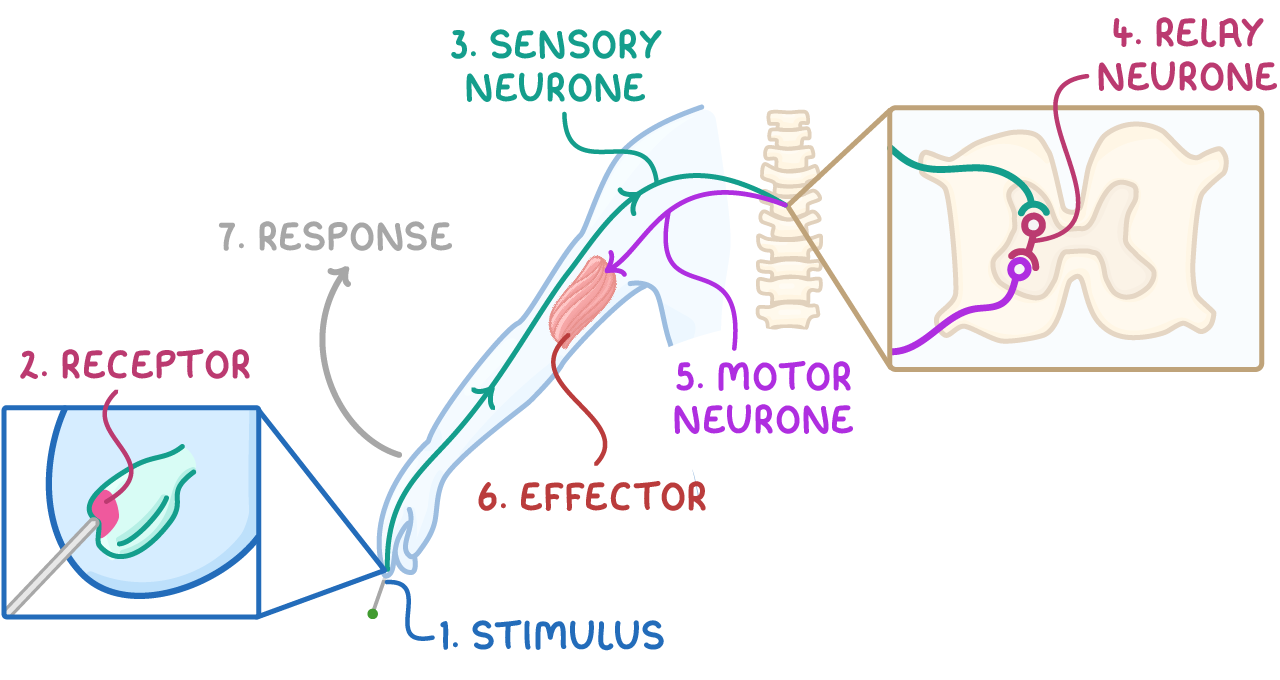Reflexes
This lesson covers:
- What a reflex arc is
- The stages of a reflex arc
- The importance of reflex arcs
What is a reflex arc?
A reflex arc is a neural pathway that causes an involuntary and immediate reaction to a stimulus, typically designed for protection.
For example, a withdrawal reflex is a type of reflex action where the body responds to danger by quickly moving away, such as pulling a hand away from a hot object.
Reflex arcs are often composed of just three types of neurone. Many of them are not controlled by the brain, but are unconsciously controlled by the spinal cord (spinal reflexes).
Stages of a reflex arc
A reflex arc represents the body's automatic response to a potentially harmful stimulus.

A reflex arc can be broken down into several key stages:
- Stimulus - This triggers the reflex, such as heat from a hot object.
- Receptor - These are specialised cells, like temperature receptors in the skin, that detect the stimulus and generate nerve impulses.
- Sensory neurone - This transmits the nerve impulses to relay neurones.
- Relay neurone (intermediate neurone) - Usually located in the spinal cord or more rarely in the brain, these connect sensory neurones to motor neurones.
- Motor neurone - This transfers nerve impulses from the relay neurones to effectors
- Effector - This is the muscle or gland that receives the signal and carries out a response, like muscles in the arm receiving a signal to contract.
- Response - This is the final action taken, such as quickly moving the hand away from the hot object.
Importance of reflex arcs
Reflex arcs play a crucial role in bodily protection and function.
They have the several key features that help them achieve this:
- Involuntary - They allow the brain to concentrate on complex processes.
- Rapid - They ensure a swift response.
- Protective - They safeguard the body from potential injuries.
- Innate - They are intrinsic mechanisms present from birth, eliminating the need for learning.
Their inherent speed and the typical lack of involvement from the brain in the decision-making process are essential for preventing excessive injuries.